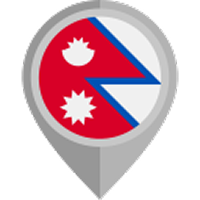Nepal vision | 13/02/2025
Kanchenjunga Circuit Trek is one of the unexplored gems of far eastern Nepal. It is completely isolated from the other towering peaks of the Himalayas. At 8586m, Kanchenjunga Peak opened the Kanchenjunga Circuit journey for travellers in 1988. It is a highly challenging adventure through one of Nepal's last unspoiled wilderness regions.
Wandering in the diverse landscapes, alluring customs and culture of local people and the appealing encounter of endangered species like snow leopard, Assamese macaque and Himalayan black bear who are happily residing in the lap of the Himalayas in the Kanchenjunga Conservation Area. Oh, and how can we forget to mention the appealing charm of the towering white peak of Yalung Glacier, Kanchenjunga (8,586m), Kambachen (7,903m), Janu (7,710m), Jongsong (7,483m), Kabru (7,353m), Tent Peak (7,365m), and the Twins (7,350m).
Now that you have gotten a sneak peek of the Kanchenjunga Circuit Trek, your excitement about learning more about this fantastic journey might be increasing. So, we are here to provide all the details for a memorable trip.
Overview of Kanchenjunga Circuit Trek
Kanchenjunga Circuit Trek takes you through the unforgettable landscape of towering peaks, cascading waterfalls, and verdant forests of rhododendron and bamboo. In addition to the appealing natural heritages, the cultural artefacts and the warm-hearted Rai and Limbu people with customs tracing back to Tibetan origin are also the highlights of the trek. Interestingly, the lower region is inhabited by the Aryan community and the mid-region by the Rai, Limbu community, with the upper region scattered by the Sherpa people, showing an amalgamation of Buddhist, Hindu, and animist principles.
You take a short flight to Bhadrapur, after which a scenic drive to the countryside of Taplejug is made. Then, you enter the gateway of the trek, aka Kanchenjunga Conservation Areas of eastern Nepal. The official journey hike starts as you climb through the scenic and dramatic foothills winding to the great mountain stronghold of peaks such as Rathong, Kumbhakarna, Jannu, and the legendary Mt. Kanchenjunga with their majestic charm of scenery en route to North Base Camp (5,143 meters).
In the past, the trek was possible by carrying all the basic necessities of life, such as food and camping equipment. But now, with the advancement of tea houses scattered along the trail, thanks to the growing popularity.
The 18-24 days Kanchenuga Trek in the remote trails has a lot to offer :
- Passing through the diverse sub-tropical and topical landscapes along with the remote region of Kanchenjunga offers an authentic wilderness experience with fewer trekkers.
- The encounter with the endangered species like red pandas, snow leopards, Himalayan blue sheep, and musk deer. of Kanchenjunga, Cosenrvationa rea is yet another fantastic opportunity to immerse yourself in the beauty of nature.
- Throughout your trek, you are welcomed by the alluring views, flapping chortens, spinning prayer wheels, and ancient monetizes scattered throughout the trail. The friendly faces of local people and the savoury local dishes are yet another highlight.
- This trek is unique because it takes you to both the North Base Camp (Pangpema, 5,143m) and South Base Camp (Oktang, 4,780m), where you can enjoy breathtaking views of Mt. Kanchenjunga (8,586m).
Is Kanchenjunga Trek Difficult?
The Kanchenjunga Circuit Trek is moderately difficult. But if you are physically healthy and strongly desire to achieve something exceptional, this walk may be for you. It is an incredible journey on a less-visited trail away from the hustle and bustle of tourists who visit Nepal.
There are plenty of factors that influence the Kanchenjunga Trek so let us find out more about them.
Altitude
The trek takes you from an altitude of 2000m to a high elevation of 5000m along the remote high-altitude trails. In such high elevations, there is a reduction of oxygen levels, which is a huge issue in your trekking journey. It can cause altitude sickness. Headache, Nausea, Vomiting, and Shortness of breath are the initial signs of altitude sickness. Later on, it can progress into life-threatening conditions of High altitude pulmonary oedema (HAPE) and high-altitude cerebral oedema (HACE).
The best way to prevent them is to acclimatize in specific elevations to give your body time to adjust. Besides, hydrating yourself at a slow pace is one of the ways to prevent this. In the case of emergency first aid, the certified guide from Nepal Vision Trek will be there to help you out. But in severe conditions, it is a must to get help from a medical professional.
Remote Trails
The trails are remote and uneven, starting from the muddy ones to the high-altitude terrain. You will be far from the busy area, and the infrastructure is essential. In such a case, you will have a hard time finding fancy accommodation in certain places.
Besides, these remote trails are rugged for your body to navigate if you are not prepared beforehand. And if they are covered in snow, then it becomes slippery and hard to walk on.
Thus, you have to start training your body beforehand to tackle these obstacles and give your body adjustment to this kind of altitude.
Trek Duration
The trek lasts between 18-24 days, covering 20km a day in those steep areas. These can be a physical challenge for even experienced trekkers as the journey demands stamina and endurance for an extended time.
Similarly, the limited infrastructure means there is a load of carrying essentials, too, so there is an extra requirement for physical stamina. Good fitness and stamina are essential for completing the trek.

How to Prepare for the Kanchenjunga Trek?
The Kanchenjunga Circuit Trek is a majestic and alluring journey. But before you embark on the trek, you might need the preparation tips to make your journey better.
Physical Training (Start at least 3 months before the trek)
- Cardio Workouts: To prepare your body for long days of hiking, focus on running, cycling, or swimming. Try to do these exercises 5 or 6 days a week to build stamina and improve your lung capacity.
- Strength Training: Work on your legs, core, and endurance. Exercises like squats, lunges, and planks will strengthen the muscles required for climbing and carrying a backpack.
- Hiking Practice: Go on multi-day treks or long day hikes with a loaded backpack to simulate actual trekking conditions. It will help your body get used to the weight and improve your hiking endurance.
Gear and Equipment
You should make sure to pack warm clothing and proper gear to help you get comfortable at a higher elevation.
- Clothing: Down jacket, Thermal layers (tops and bottoms), Waterproof jacket and pants, Trekking shirts (light and breathable), Fleece jacket, Wool socks (several pairs), Warm hat and gloves
- Footwear: Waterproof trekking boots, Camp shoes (light sandals or sneakers)
- Sleeping Gear: Sleeping bag (rated for cold temperatures), Sleeping pad (for extra comfort and insulation)
- Safety Equipment: Sunglasses (for sun protection), Trekking poles (help with balance), Headlamp (with extra batteries)
- Health & First Aid: Personal medications (if needed), Diamox (for altitude sickness), Water purification tablets
- Other Essentials: Backpack (45-50L for carrying your gear), Water bottles or hydration system, Camera (optional, for capturing scenic views), Snacks (energy bars, nuts, etc.)
Permit and Guide Requirement
Government-Licensed Guide: For the Kanchenjunga Trek, trekking with a government-licensed guide is required.
Permits
The Kanchenjunga Conservation Area Project Entry Permit (KCAP) costs 2000 Nepali rupees per person with no time restrictions.
The Restricted Area Entry Permit (RAP) for regions like Tapethok and Yamphuding costs 20 USD per person per week.
The permit process for the Kanchenjunga region is more involved than that for other areas, but with Nepal Vision Trek, we will take care of everything for you.
Porter
While hiring a porter is not mandatory, we recommend it, especially since the trek passes through remote and rugged terrains. A porter can carry up to 20 kg of your gear each day, making the trek more manageable.
Tips for completing the Kanchenjunga Trek:
- The trek reaches high altitudes, so take time to acclimatize to prevent altitude sickness. Spend extra days in key locations for proper adjustment.
- Prepare your body with cardio exercises, strength training, and hiking with a loaded backpack. This will help you handle the challenging terrain and long days of hiking.
- Bring only essential gear. Lightweight, warm, and waterproof clothing, along with a good quality sleeping bag, will ensure you're comfortable during the trek.
- Drink plenty of water and eat high-energy foods to keep your energy levels up. The trek is demanding, and staying hydrated and well-fed is key to maintaining stamina.
- The Kanchenjunga region is home to diverse ethnic groups with rich traditions. Be respectful of local customs, ask before taking photos, and engage with the locals to enrich your experience.
To wrap up, The Kanchenjunga Circuit Trek is a breathtaking adventure with stunning landscapes, diverse cultures, and a rewarding challenge for those seeking remote beauty. With majestic peaks, rich traditions, and a unique trekking experience, it’s perfect for adventurous souls.
Ready to explore Kanchenjunga? Book your trek with Nepal Vision Trek and experience the adventure of a lifetime with expert guides and tailored itineraries!
FAQS









